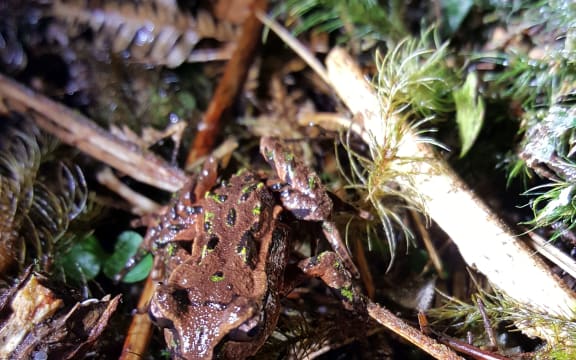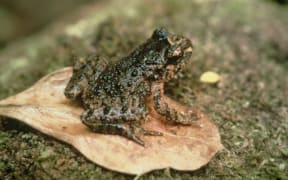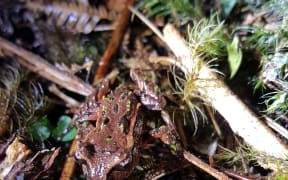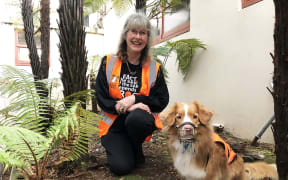
Hochstetter's frog. Photo: John Johns / Archives New Zealand - Te Rua Mahara o te Kāwanatanga
One of Aotearoa's few native frogs is suffering through a dry summer and could disappear over the next several decades, the Department of Conservation warns.
The Hochstetter's frog is endemic to New Zealand's upper North Island and differs from most other frogs, Department of Conservation (DOC) science advisor Jen Germano said.
"They come from a really archaic lineage of frogs. They sort of split off from other frogs a really long time ago, so they have a lot of unique characteristics.
"For instance, they're completely silent. The Hochstetter's frog doesn't have external eardrums and they don't communicate vocally."
Of New Zealand's three endemic frog species, the Hochstetter's frog was the only one to be semi-aquatic.
"The other two, the Archey's frog and Hamilton's frog, are both terrestrial species," Germano said.
But that made them more susceptible to changes in weather, particularly during droughts and extended dry periods.

Archey's frog. Photo: RNZ / Alison Ballance
"They have semi-permeable skin and need to stay damp to survive. As things change and the climate gets warmer and drier, it's going to cause serious issues," Germano said.
"Of our three frog species, the Hochstetter's frog is going to be impacted the most. If you look out to 2090, only 12 percent of the current habitat will still be suitable for frogs."
Extreme storms were another issue.
"We have one particular Hochstetter's population, Otaua, and one of those major rain events caused a huge slip and probably 30 percent of the frogs were wiped out. We're going to see a lot more events like that."
But there were other, more immediate, concerns too.
"Probably one of the greatest threats to our native frogs is predators," Germano said. "If we can't protect them against invasive species, then we won't have frogs to protect from climate change."
She said DOC was doing a lot of work on predator control to protect the Hochstetter's frog for as long as possible.
"The Hochstetter's frogs, like any of our native species, are an important part of our ecosystem," she said.
"They're a species that isn't found anywhere else in the world, so if we don't protect them... they'll disappear. We would be losing a really important part of Aotearoa."






